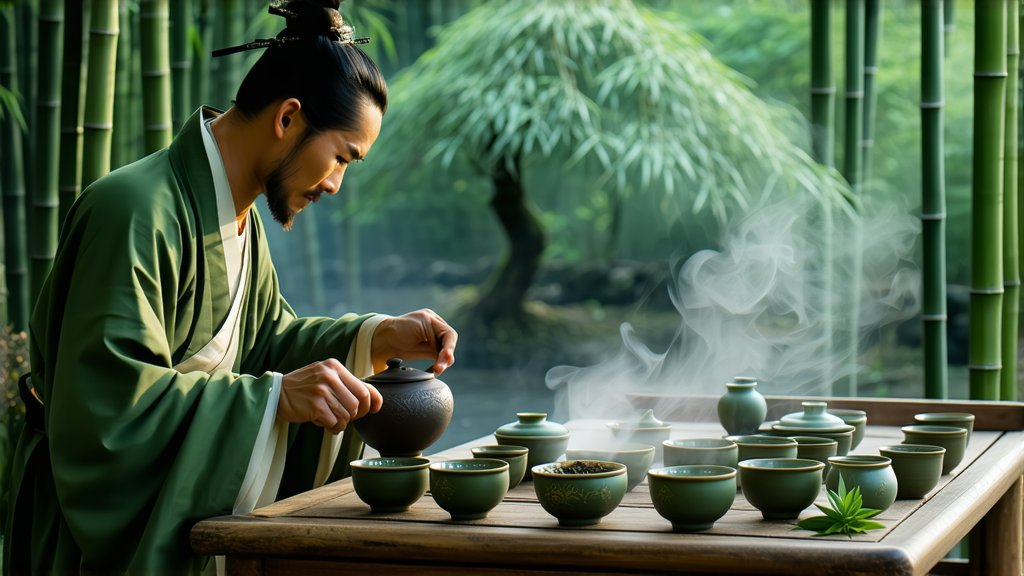
In the vast and diverse landscape of Chinese tea culture, few varieties captivate the senses and imagination quite like Pu-erh tea. This unique dark tea, originating from the Yunnan province in southwestern China, stands as a testament to centuries of tradition, meticulous craftsmanship, and the art of transformation. As we embark on this exploration of Pu-erh tea, we delve into its rich history, intricate production process, various types, and the nuanced art of its appreciation.
A Glimpse into History
Pu-erh tea traces its roots back over a millennium, with its earliest records appearing during the Tang Dynasty (618-907 AD). However, it was during the Ming Dynasty (1368-1644) that Pu-erh began gaining prominence as a distinct category of tea. The name "Pu-erh" is derived from the market town of Pu'er in Yunnan, which became a crucial hub for tea trading along the ancient Tea Horse Road. This historic route facilitated the exchange of goods between the tea-producing regions of Yunnan and Tibet, fostering a deep cultural connection between these areas.
The Art of Fermentation
What sets Pu-erh apart from other teas is its post-fermentation process, a unique characteristic that contributes to its complexity and depth of flavor over time. There are two primary categories of Pu-erh tea: raw (Sheng) and ripe (Shou).
-
Raw Pu-erh (Sheng): This type undergoes natural fermentation through aging, where the tea leaves are sun-dried and then compressed into cakes, bricks, or tuochas without further processing. Over years, if not decades, the tea oxidizes slowly, developing a richer taste and aroma. The transformation is influenced by factors such as humidity, temperature, and storage conditions.
-
Ripe Pu-erh (Shou): In contrast, Shou Pu-erh undergoes a controlled fermentation process known as "wo dui," or pile fermentation. Loose leaves are piled together in a humid environment, promoting microbial activity that accelerates the aging process. This method results in a smoother, earthier flavor profile compared to its raw counterpart.
From Leaf to Cup: The Making of Pu-erh
The journey of Pu-erh tea from leaf to cup involves several stages, each contributing to its distinctive character:
-
Picking: Only the youngest leaves and buds are handpicked during the spring and autumn harvests, ensuring optimal quality.
-
Withering: Freshly picked leaves are spread out to wither under sunlight or in shade, reducing moisture content and softening the leaves for rolling.
-
Rolling: Withered leaves are rolled manually or using machines to break down cell walls, releasing enzymes that initiate fermentation.
-
Fermentation & Aging: Depending on whether it's Sheng or Shou, the tea undergoes either natural aging or controlled fermentation. Aging can take months to decades, with the tea developing more refined flavors and aromas over time.
-
Compression: Once fermented to the desired level, the tea is often pressed into various shapes using steam heat, which helps maintain its structure during long-term storage and transport.
-
Drying: Finally, the compressed tea is dried to remove any remaining moisture, preparing it for packaging and distribution.
The Nuances of Appreciation
Pu-erh tea offers a sensory experience that evolves with each infusion, making it a favorite among connoisseurs worldwide. To truly appreciate Pu-erh, one must engage in a ritualistic approach to brewing and tasting:
-
Preparation: Use a Yixing clay teapot or a Gaiwan for optimal flavor extraction. Rinse the leaves briefly with boiling water to awaken their flavors.
-
Infusion: Steep the tea in water just off the boil (around 95-100°C), adjusting steeping times based on personal preference and the age of the tea. Typically, shorter steeps (5-10 seconds) are used initially, gradually increasing as subsequent infusions bring out different layers of flavor.
-
Observation: Admire the color transformation of the liquor, ranging from bright amber for younger Sheng to deep red-brown for aged Shou. Note the clarity and viscosity of the brew.
-
Aroma: Inhale the evolving scents released during each steep, which may include notes of earth, wood, mushrooms, dried fruits, or even hints of floral undertones.
-
Tasting: Sip slowly, allowing the tea to coat your palate. Pay attention to its texture, body, and aftertaste. Younger Sheng tends to be more astringent and robust, while older Pu-erh develops a mellow, velvety smoothness.
-
Multiple Infusions: Pu-erh is renowned for its ability to be re-infused multiple times, each brew revealing new dimensions of flavor and complexity.
Conclusion
Pu-erh tea is more than just a beverage; it embodies a profound cultural heritage and a philosophy of harmony between nature and human ingenuity. Its ability to transform over time, both in flavor and spiritual significance, mirrors the cyclical nature of life itself. As you embark on your own journey exploring Pu-erh tea, remember that patience and an open mind are key to unlocking its mysteries and savoring its timeless allure.